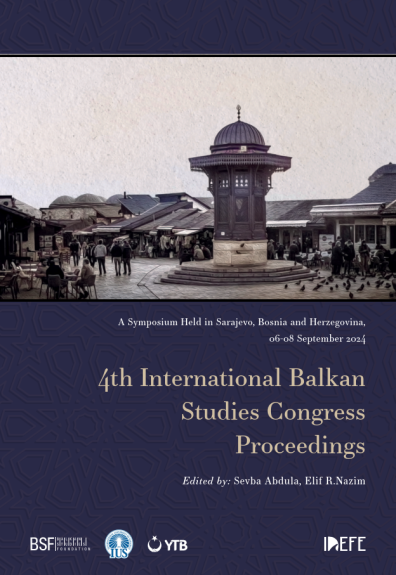Proceedings
Xıx. Yüzyılda Bulgaristan Medreseleri: Tırnova Voyvodası Feyzi (Feyzullah) Ağa Medresesi ve Vakfiyesi
Authors
-
Hümeyra Selvi TırnavaPhD Student, İstanbul Medeniyet Universityhttps://orcid.org/0000-0002-9415-6625
Synopsis
Education and knowledge have long been the crown jewels of Turkish societies. The epics, inscriptions, poems, and proverbs on education and morality found in ancient Turkish states attest to this. With the advent of Islam, “the rank of knowledge was considered the highest of all ranks,” and scholars and Sufis played a pivotal role in the development of science and Sufi life during the early phase of the Ottoman Empire. The study of the structures built by the Ottomans in the Balkans is a subject of great interest to historians. Ekrem Hakkı Ayverdi’s works on this topic are particularly significant. Bulgarian madrasahs held an important place within the Ottoman madrasah system. According to Ayverdi’s research, 144 madrasahs were established in Bulgaria. However, in the study conducted by Bilgin Aydın and Rıfat Günalan, the number of madrasahs was found to be 281. Between the 14th and 19th centuries, Plovdiv was the Bulgarian city with the highest number of madrasahs, bo-asting 21. It was followed by Tarnovo with 19 madrasahs. Notably, Tarnovo was the only place in Bulgaria where a madrasah was established in every century between the 14th and 19th centuries. This study analyzes the state of madrasahs in the 19th century in the city of Veliko Tarnovo, known as Turnavos by the Greeks and Tırnova by the Ottomans, with a particular focus on the Feyzi Aga Madrasah. The most (طرنوه) significant madrasah established in Tarnovo in the 19th century was the Feyzi Aga Madrasah, founded by Feyzullah Aga, the Chief Janitor of the Dergâh-ı Âli and later the Voivode of Tarnovo, with a charter dated 10 Ramadan 1228/6 September 1813. We learn about the final status of the madrasah, also referred to as Feyzullah Aga in some records, from Aksekili Ahmed Hamdi’s article in Sebilürreşad dated Septem-ber 6, 1328. It is stated there that Gazi Firuz Bey Madrasah and Feyzi Aga Madrasah, two of the madrasahs in Tarnovo, were either converted into churches or burned down by the Bulgarians. This study examines the waqf records of these madrasahs and the documents from the State Archives of the Presidency of the Republic of Bul-garia. It also evaluates the educational structure of Tarnovo in the 19th century a city that played a significant role in Bulgaria’s path to independence in various aspects throughout history. Additionally, the study considers the contributions of Feyzullah Aga, who served as Tarnovo Voivode in the first quarter of the same century, and the waqfs he established.
Copyright
Copyright (c) 2025 Idefe Publications
License

This work is licensed under a Creative Commons Attribution-NonCommercial 4.0 International License.
Xıx. Yüzyılda Bulgaristan Medreseleri: Tırnova Voyvodası Feyzi (Feyzullah) Ağa Medresesi ve Vakfiyesi
Downloads
Publication Information
-
Publication TypeChapter
-
Volume
-
Pages95-110
-
PublishedJune 7, 2025
-
Series
-
Series PositionProceedings 04
Abdula, S. (Ed.). (2025). Xıx. Yüzyılda Bulgaristan Medreseleri: Tırnova Voyvodası Feyzi (Feyzullah) Ağa Medresesi ve Vakfiyesi. In 4th International Balkan Studies Congress Proceedings: Vol. Proceedings 04 (pp. 95-110). Idefe Publications. https://doi.org/10.5331/
